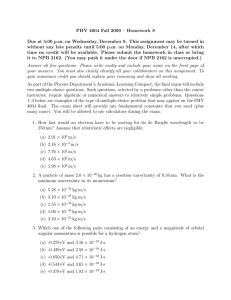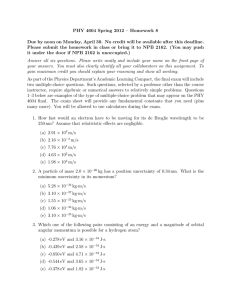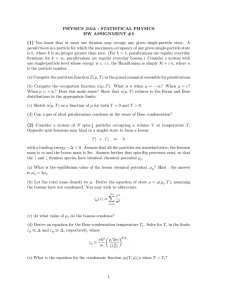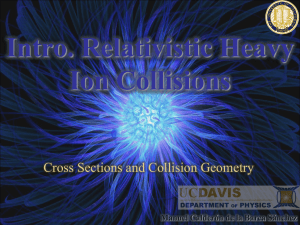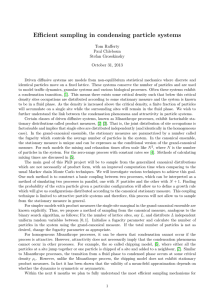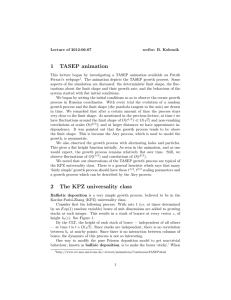PHY 4604 Fall 2008 – Homework 8
advertisement
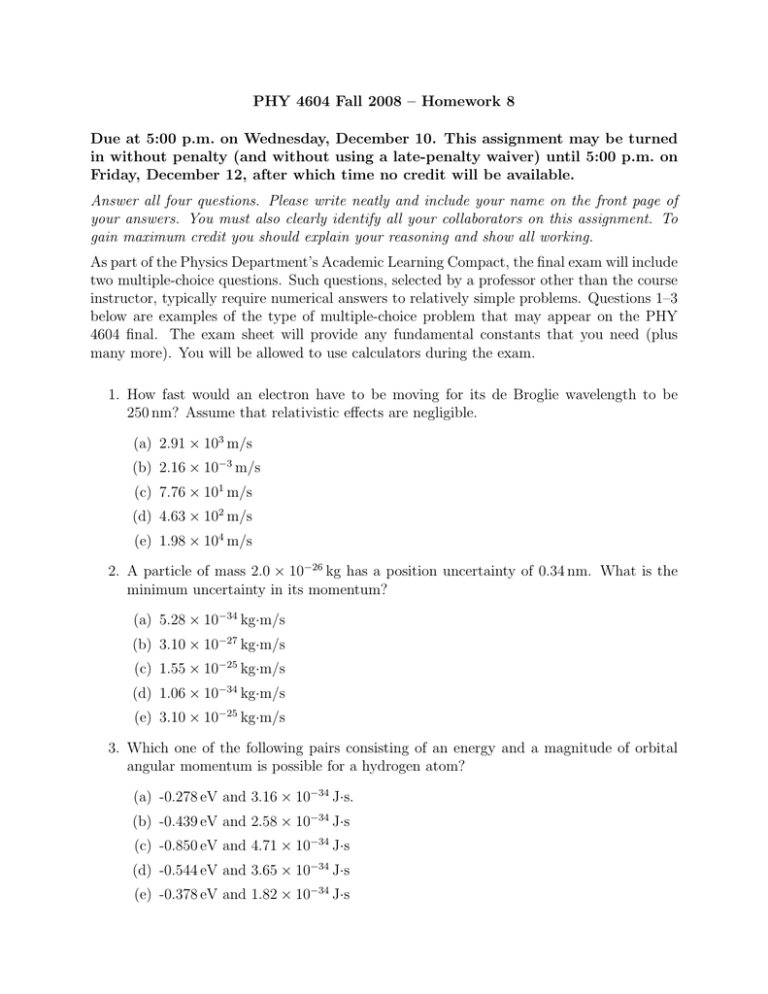
PHY 4604 Fall 2008 – Homework 8 Due at 5:00 p.m. on Wednesday, December 10. This assignment may be turned in without penalty (and without using a late-penalty waiver) until 5:00 p.m. on Friday, December 12, after which time no credit will be available. Answer all four questions. Please write neatly and include your name on the front page of your answers. You must also clearly identify all your collaborators on this assignment. To gain maximum credit you should explain your reasoning and show all working. As part of the Physics Department’s Academic Learning Compact, the final exam will include two multiple-choice questions. Such questions, selected by a professor other than the course instructor, typically require numerical answers to relatively simple problems. Questions 1–3 below are examples of the type of multiple-choice problem that may appear on the PHY 4604 final. The exam sheet will provide any fundamental constants that you need (plus many more). You will be allowed to use calculators during the exam. 1. How fast would an electron have to be moving for its de Broglie wavelength to be 250 nm? Assume that relativistic effects are negligible. (a) 2.91 × 103 m/s (b) 2.16 × 10−3 m/s (c) 7.76 × 101 m/s (d) 4.63 × 102 m/s (e) 1.98 × 104 m/s 2. A particle of mass 2.0 × 10−26 kg has a position uncertainty of 0.34 nm. What is the minimum uncertainty in its momentum? (a) 5.28 × 10−34 kg·m/s (b) 3.10 × 10−27 kg·m/s (c) 1.55 × 10−25 kg·m/s (d) 1.06 × 10−34 kg·m/s (e) 3.10 × 10−25 kg·m/s 3. Which one of the following pairs consisting of an energy and a magnitude of orbital angular momentum is possible for a hydrogen atom? (a) -0.278 eV and 3.16 × 10−34 J·s. (b) -0.439 eV and 2.58 × 10−34 J·s (c) -0.850 eV and 4.71 × 10−34 J·s (d) -0.544 eV and 3.65 × 10−34 J·s (e) -0.378 eV and 1.82 × 10−34 J·s 4. The exchange interaction in a 1D infinite square well. (Based on Griffiths Problem 5.6.) Two particles, each of mass m, move in one dimension under the potential ( 0 for 0 < x1 < a and 0 < x2 < a, V (x1 , x2 ) = +∞ otherwise. One of the particles is in the single-particle stationary state of index n (where n = 1 corresponds to the ground state of this potential), and the other particle is in the singleparticle state p. The two particles are in the same spin state. Calculate h(x1 − x2 )2 i for this situation under the assumption that the particles are (a) distinguishable; (b) identical bosons; (c) identical fermions. Hint: In Homework 2, Problem 2 you calculated the expectation values of x and x2 in the stationary state n of the single-particle infinite square well extending over |x| < a/2. When shifted to describe a well covering 0 < x < a, hxin = a/2 and hx2 in = (a2 /6)[2 − 3/(nπ)2 ]. You may quote these results without proof, as well as the formula 2 sin(ax) sin(bx) = cos[(a − b)x] − cos[(a + b)x].
